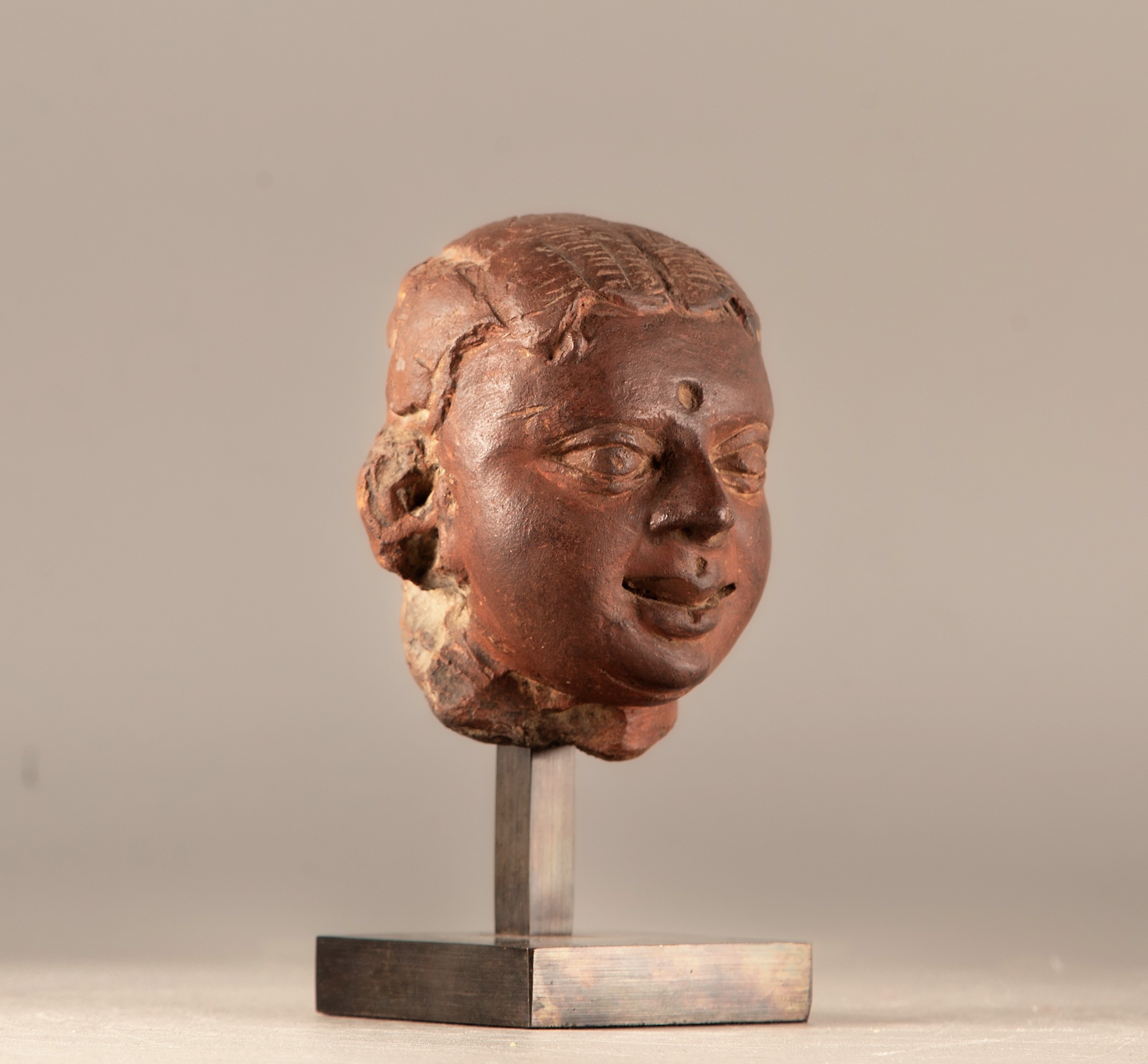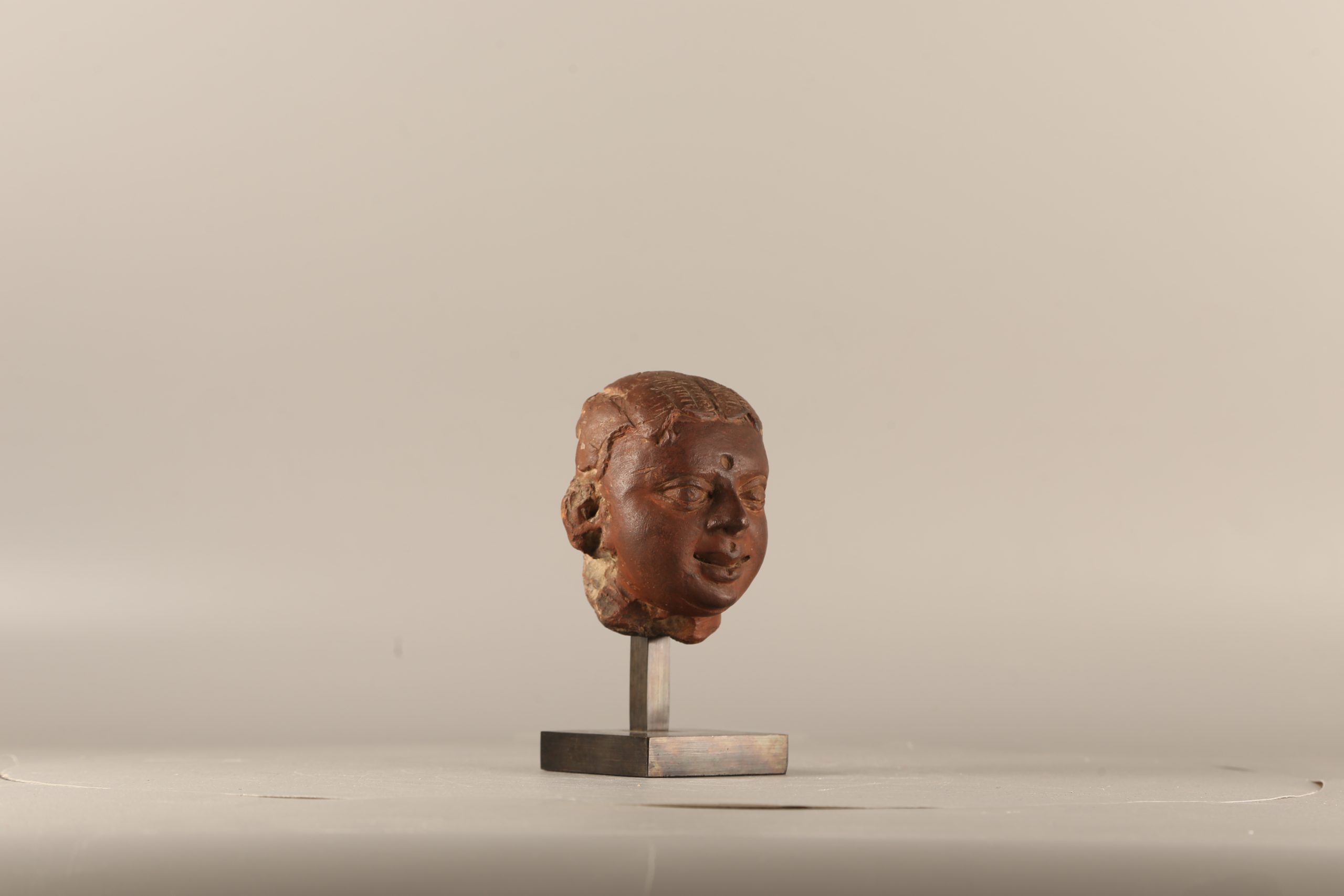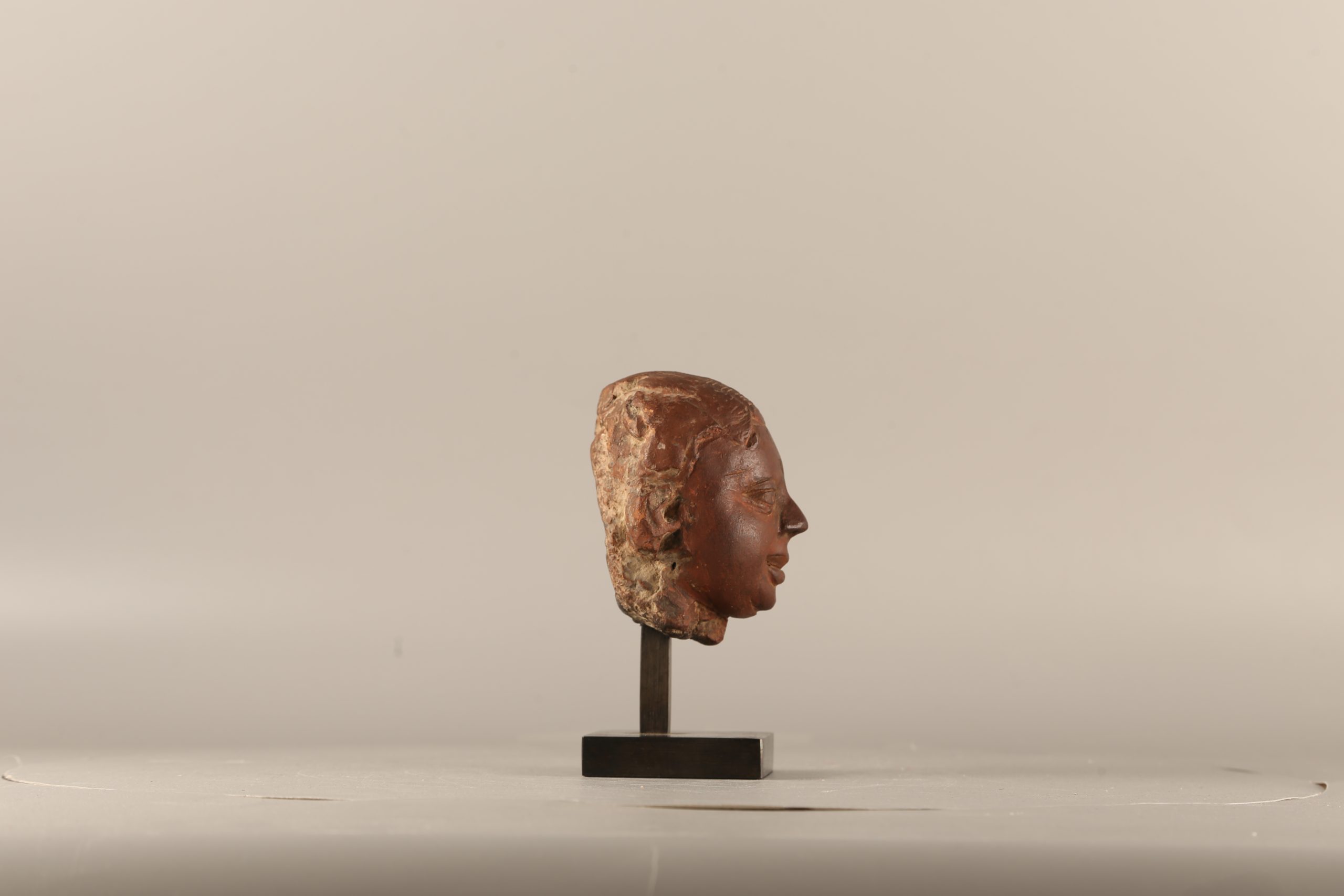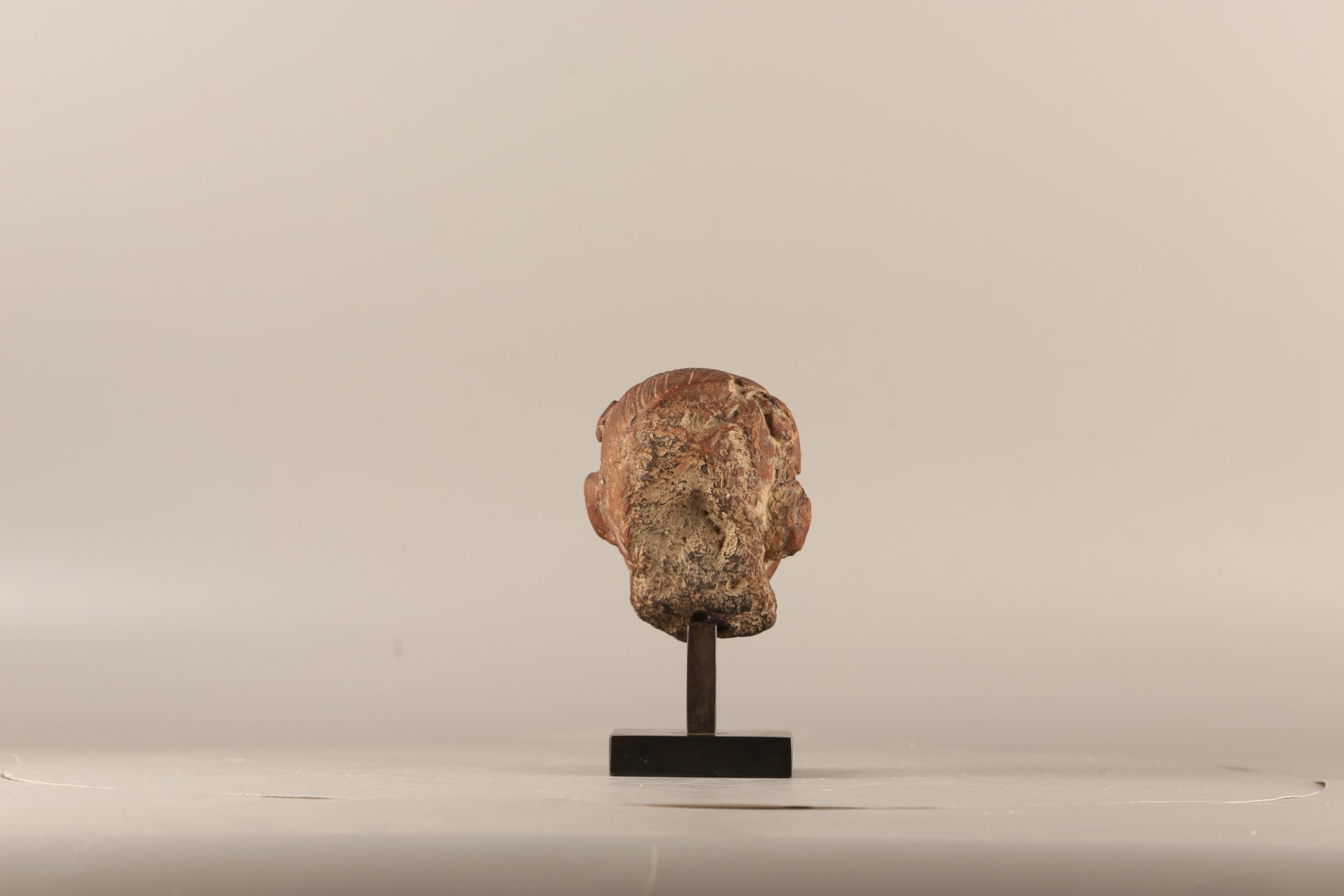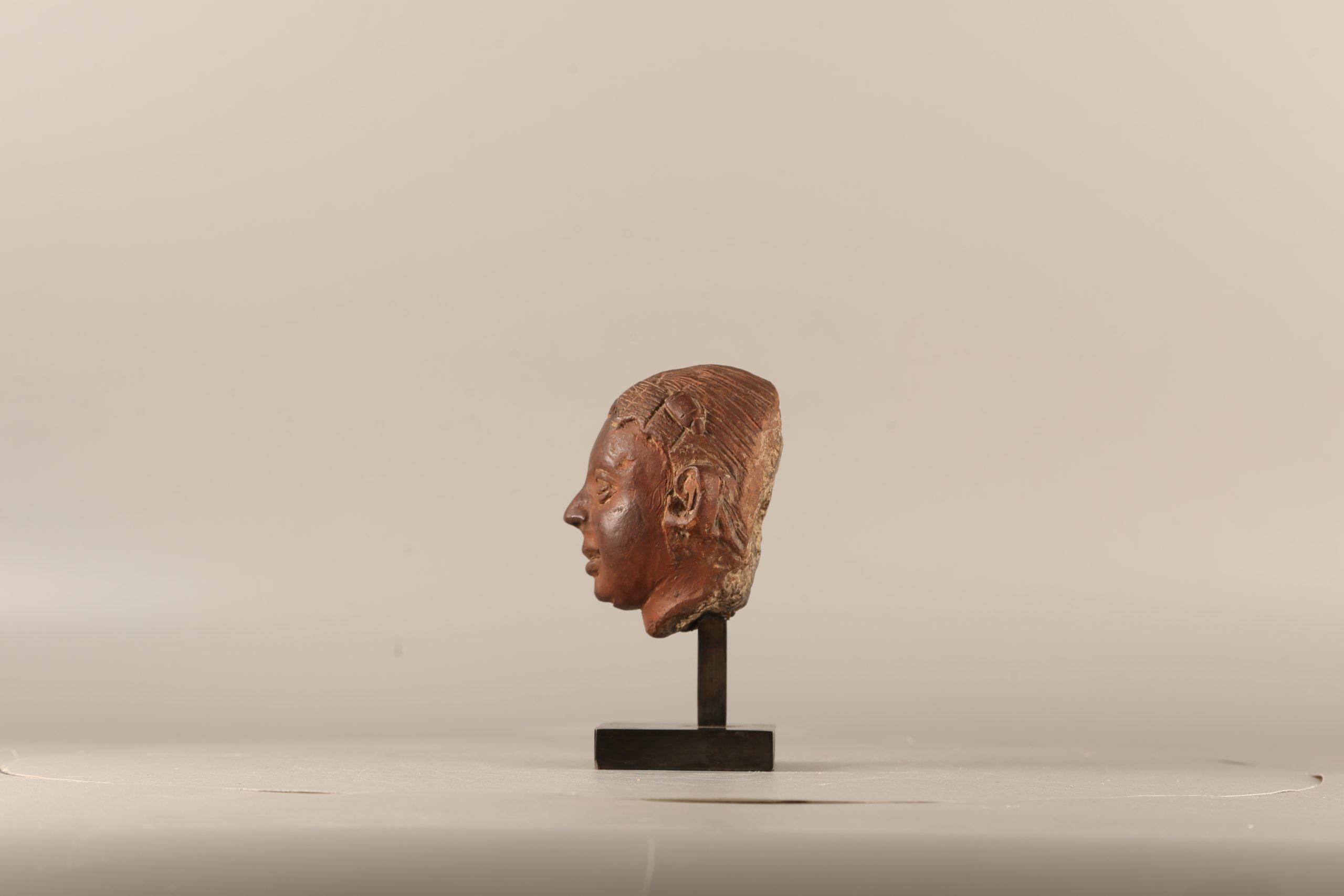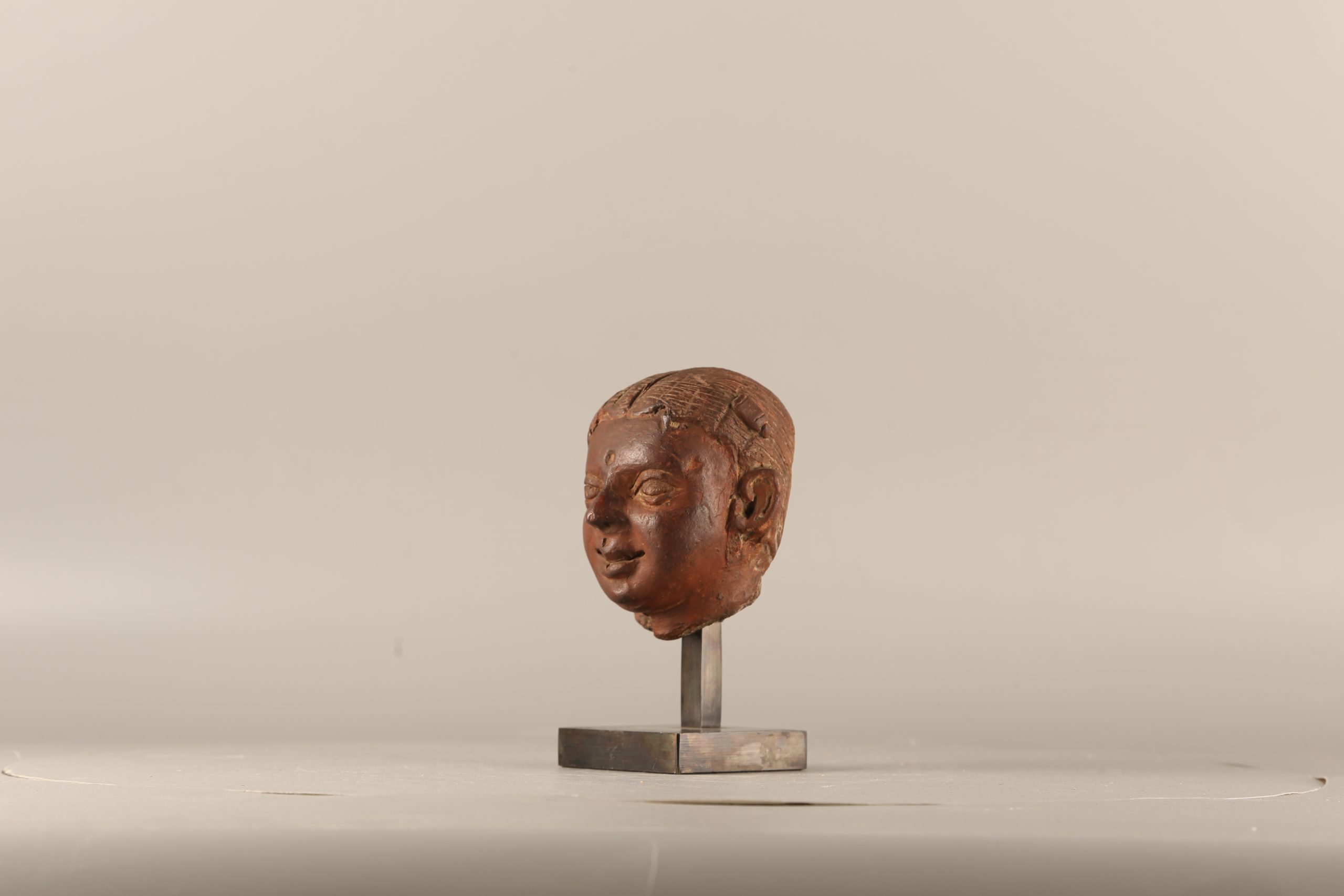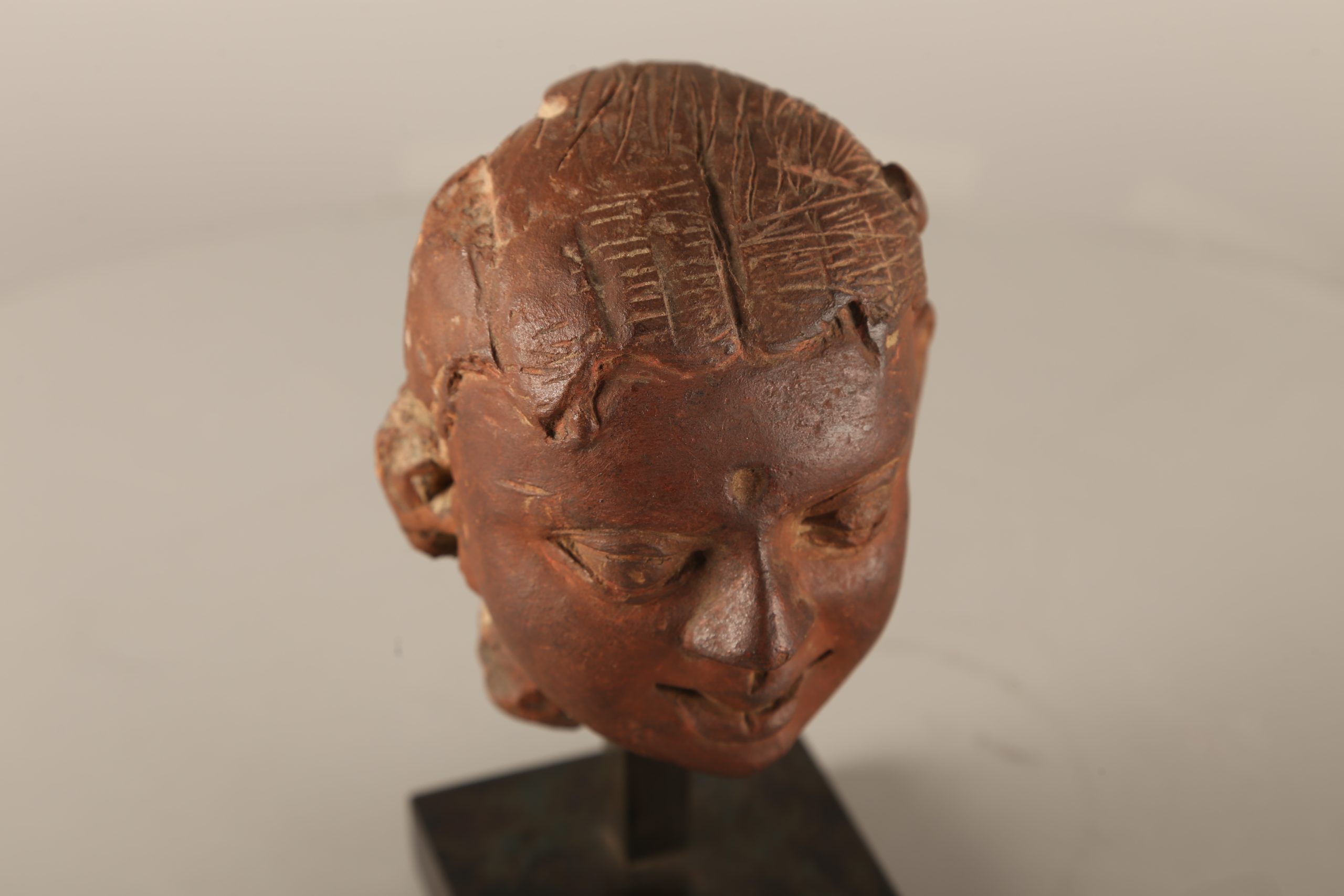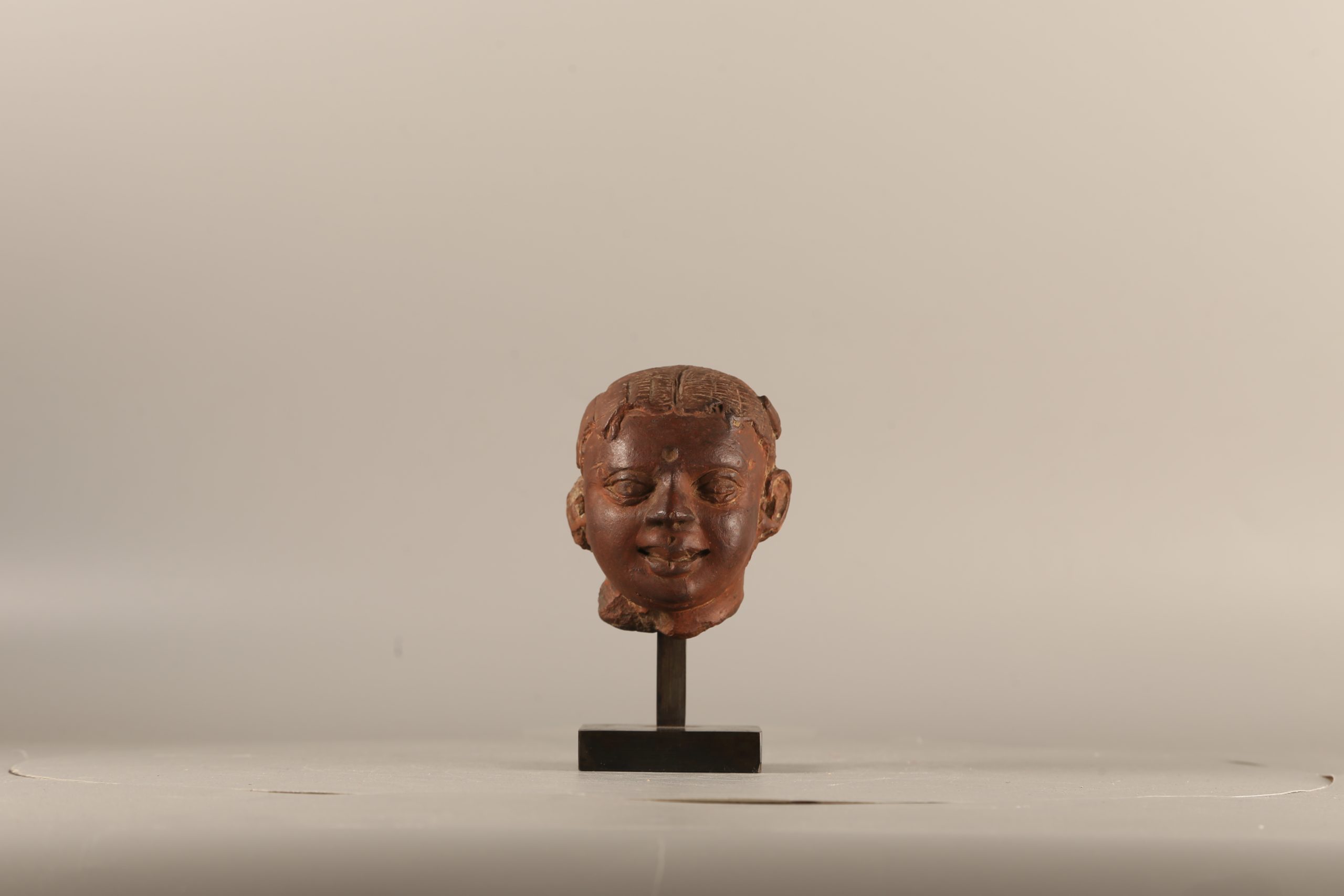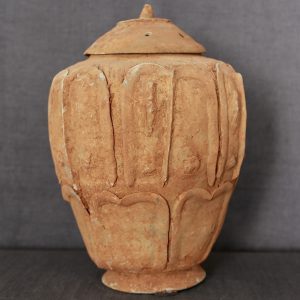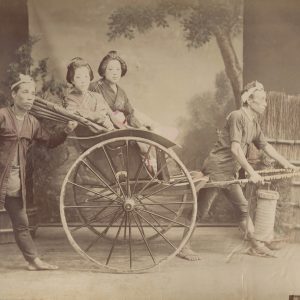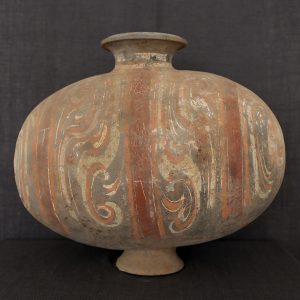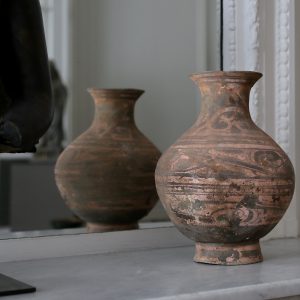Divinity head
Terracotta
Northern India
5th-6th century, Gupta period
H. 10.5 cm
Description
The Gupta period (4th – 6th century) is often considered the classical period of Indian art.
The Gupta aesthetic, the classical period of Indian art
The Gupta period is often referred to as the “golden age” of Indian art, when humanism triumphed in religious art. Here, the face with its stylised features and sober and gentle modelling is in keeping with this much appreciated aesthetic. The same is true for the very large, slightly protruding eyes with hemmed and incised contours, which are placed under curved eyebrows. Nevertheless, if the dating corresponds to the Gupta period, we note some resurgences of the Kusana aesthetic. Indeed, given the artistic effervescence that reigned over this region for centuries, the production bears witness to certain reminiscences, such as the full shape of the face or the smile, which is strongly marked here. The treatment of the hairstyle is noteworthy, with the strands highlighted by fine incisions, the waves of which run down the bodhisattva’s forehead.
The brilliant school of Mathurā
One of the most important artistic centres of the Gupta period, initially a place of pilgrimage in the north of India, the region of Mathurā was a place of pilgrimage. of India, the Mathurā region saw the development of an artistic school from the 3rd century onwards, which had a flourishing flourishing production. The Mathurā school has indeed produced numerous religious sculptures, all of which are made in all of which are made of red sandstone, sometimes speckled. The skill of the sculptors ensures that this school The skill of the sculptors ensured a great durability to this school, whose production still continued in the medieval period. This This durability demonstrates the importance attached to the Gupta aesthetic.
The popularity of human images
This deity was probably an integral part of a temple decoration temple decoration, and the fragmentary nature of the fragmentary nature seems to confirm this hypothesis, although the figure stands out almost in the round. It is also an example of an example of an image that effectively combines an accessible human figure human figure with the sublime. The gentle humanity, so appreciated in Gupta sculpture, is evident in this finely carved face finely sculpted face with full, smiling lips and a dynamic dynamic expression.
Provenance: French private collection.

